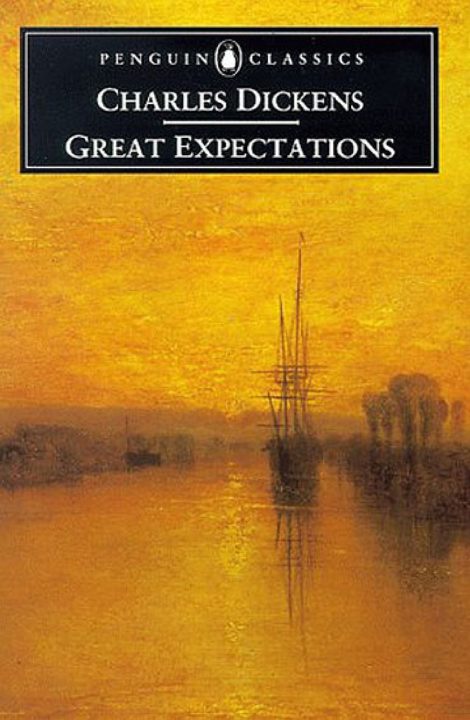
GREAT EXPECTATIONS
Considered by many critics to be Charles Dickens’s most psychologically acute self-portrait, Great Expectations is without a doubt one of Dickens’s most fully-realized literary creations.
Work on Great Expectations commenced in late September of 1860 at what proved to be a peak of emotional intensity for its author. Two years before, Dickens had separated from Catherine, his wife of twenty-two years, and several weeks prior to the beginning of this novel, Dickens had burned all his papers and correspondence of the past twenty years at his Gad’s Hill estate. This action, in retrospect, can be viewed as a sort of spiritual purge (think of Pip’s burnt hands/Miss Havisham on fire)—an attempt to break decisively from the past in order (paradoxically) to fully embrace it,
Considered by many critics to be Charles Dickens’s most psychologically acute self-portrait, Great Expectations is without a doubt one of Dickens’s most fully-realized literary creations.
Work on Great Expectations commenced in late September of 1860 at what proved to be a peak of emotional intensity for its author. Two years before, Dickens had separated from Catherine, his wife of twenty-two years, and several weeks prior to the beginning of this novel, Dickens had burned all his papers and correspondence of the past twenty years at his Gad’s Hill estate. This action, in retrospect, can be viewed as a sort of spiritual purge (think of Pip’s burnt hands/Miss Havisham on fire)—an attempt to break decisively from the past in order (paradoxically) to fully embrace it, as he does so resonantly in this work.
The writing of Great Expectations, and by extension the creation of its protagonist, Pip, therefore, can be viewed as a kind of excavation for its author, a cathartic attempt to come to terms with the painful facts of his childhood—particularly the family’s chronic economic instability, culminating in his father’s imprisonment due to financial insolvency. Also paramount in his psychological make-up were Dickens’s consignment at the age of twelve to work as a child laborer at Warren’s Blacking factory (a secret no one but his closest friend, John Forster, knew) and his subsequent separation from his family as a result—all of which took place over the course of two months. This period in the young boy’s life, then, represents both a literal and metaphorical “orphaning” and was certainly the crucible in which his personality was formed. This sense of primal loss, and fear of impending economic ruin, manifested itself later in Dickens’s own Herculean and obsessive efforts to busy himself (often simultaneously) as a writer, editor, and public speaker—as if this were the only way he could ensure himself of financial solvency.
Where the creator (Dickens) and his creation (Pip) diverge is that the protagonist (through his suffering and disappointment) learns to accept his station in life. By the end of his saga, Pip has, for the most part, shed his illusions (his “expectations”) and is able to live a simple but fulfilling life as a clerk in the company of his great friend, Herbert Pocket.
Dickens, on the other hand, it seems never adequately internalized the lessons of his own life and success. In an autobiographical fragment, he wrote: “Even now, famous and caressed and happy, I often forget in my dreams that I have a dear wife and children; even that I am a man; and wander desolately back to that time of my life” (as a child laborer).
Written in the last decade of his life, Great Expectations is also a meditation on the act of writing (as a book of memory) and the creative imagination, opening as it does with the young Pip (aged seven) in the churchyard, attempting to conjure up through sheer will, a physical picture of his (never-seen) parents by carefully studying the lettering on their tombstones. This memorable scene is a metaphorical attempt to raise the dead through an act of pure imagination.
Serialized between December 1, 1860, and August 3, 1861, Great Expectations was an extraordinary success, selling (midway through its run), over one hundred thousand copies weekly in Dickens’s magazine All the Year Round. Published in book form in July 1861, it was considered by contemporary critics to represent a return to Dickens at the peak of his powers, deftly mixing comedy and tragedy and with a rich brew of major and minor characters. By the end of that summer, the book had gone through four printings. Later critics were equally responsive. Playwright George Bernard Shaw felt that Great Expectations was Dickens’s “most compactly perfect book.” The poet Swinburne believed the story of the novel to be unparalleled “in the whole range of English fiction.”
Narrated by a middle-aged Pip, Great Expectations can be read on many levels—as a morality play of a young boy’s coming of age, and his sudden and unexpected rise from the lower to the leisure class (due to the anonymous efforts of a mysterious benefactor). The novel can also be read as an ironic commentary: a social critique on money (as commodity) and how that commodity affects everyone around it. It can also be enjoyed as a rattling good mystery story replete with secrets, as well as with shady characters, thieves, and murderers of all stripes. In the end, Great Expectations is an unforgettable tale about fate, and how a chance encounter between an orphan named Pip and an escaped convict radically and arbitrarily alters the lives of everyone around them.
- Paperback
- 9780199219766
Praise
field_56d4d2d34ece7
Discussion Questions
field_56d74265b59ef
